Genome concentration limits cell growth and modulates proteome composition in Escherichia coli
- PMID: 39714909
- PMCID: PMC11666246
- DOI: 10.7554/eLife.97465
Genome concentration limits cell growth and modulates proteome composition in Escherichia coli
Abstract
Defining the cellular factors that drive growth rate and proteome composition is essential for understanding and manipulating cellular systems. In bacteria, ribosome concentration is known to be a constraining factor of cell growth rate, while gene concentration is usually assumed not to be limiting. Here, using single-molecule tracking, quantitative single-cell microscopy, and modeling, we show that genome dilution in Escherichia coli cells arrested for DNA replication limits total RNA polymerase activity within physiological cell sizes across tested nutrient conditions. This rapid-onset limitation on bulk transcription results in sub-linear scaling of total active ribosomes with cell size and sub-exponential growth. Such downstream effects on bulk translation and cell growth are near-immediately detectable in a nutrient-rich medium, but delayed in nutrient-poor conditions, presumably due to cellular buffering activities. RNA sequencing and tandem-mass-tag mass spectrometry experiments further reveal that genome dilution remodels the relative abundance of mRNAs and proteins with cell size at a global level. Altogether, our findings indicate that chromosome concentration is a limiting factor of transcription and a global modulator of the transcriptome and proteome composition in E. coli. Experiments in Caulobacter crescentus and comparison with eukaryotic cell studies identify broadly conserved DNA concentration-dependent scaling principles of gene expression.
Keywords: Caulobacter crescentus; E. coli; cell biology; cell growth; limitation; proteome allocation; ribosomes; transcription.
© 2024, Mäkelä, Papagiannakis et al.
Conflict of interest statement
JM, AP, WL, ML, SG, MS, GM, JS, CJ No competing interests declared
Figures


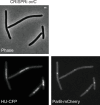



















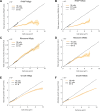
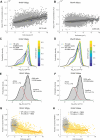
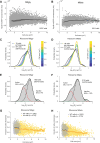
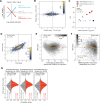




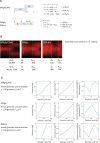






Update of
- doi: 10.1101/2024.02.26.582181
- doi: 10.7554/eLife.97465.1
- doi: 10.7554/eLife.97465.2
References
-
- Amann RI, Binder BJ, Olson RJ, Chisholm SW, Devereux R, Stahl DA. Combination of 16S rRNA-targeted oligonucleotide probes with flow cytometry for analyzing mixed microbial populations. Applied and Environmental Microbiology. 1990;56:1919–1925. doi: 10.1128/aem.56.6.1919-1925.1990. - DOI - PMC - PubMed
MeSH terms
Substances
Associated data
- Actions
LinkOut - more resources
Full Text Sources
Molecular Biology Databases

